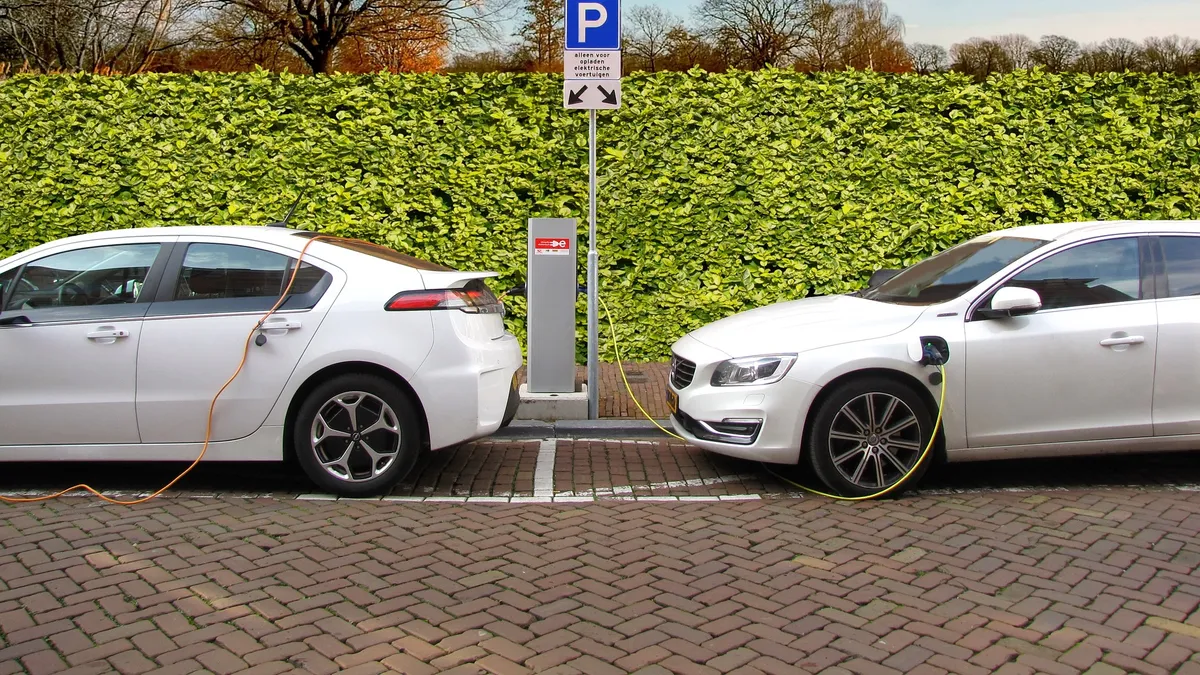Dive Brief:
- Average market prices for battery packs have plunged from $1,100/kWh in 2010 to $156/kWh in 2019, an 87% fall in real terms, according to a report released Tuesday by Bloomberg New Energy Finance (BNEF).
- Prices are projected to fall to around $100/kWh by 2023, driving electrification across the global economy, according to BNEF's forecast.
- Customers purchasing batteries at a commercial scale for electric vehicles and energy storage, as well as using high energy density cathodes to store energy more efficiently in battery packs, are all spurring the price decline.
Dive Insight:
BNEF's latest forecast, from its 2019 Battery Price Survey, is an example of how advancements in battery technology have driven down costs at rates faster than previously predicted. Three years ago, when battery prices were around $300 per kWh, BNEF projected they would fall to $120/kWh by 2030.
Now, "the path to achieving $100/kWh by 2024 looks promising, even if there will undoubtedly be hiccups along the way," BNEF said in a statement. "There is much less certainty on how the industry will reduce prices even further," from $100/kWh to BNEF's forecast of around $60/kWh in 2030.
Further price reductions are not "impossible," BNEF said, but will be more complicated because "there are a variety of options and paths that can be taken," such as standardizing battery pack designs across different EV models or introducing new technologies to improve the batteries themselves, like new cathode materials.
The survey also projects that the global lithium-ion battery market size will grow from a little over $20 billion today to $60 billion by 2025 and nearly $120 billion by 2030.
The cost of lithium-ion batteries mandates the cost of electric vehicles for consumers and the ability of battery storage projects to compete in electricity markets. As they get cheaper, batteries will be used in more industry sectors. "For example, the electrification of commercial vehicles, like delivery vans, is becoming increasingly attractive," BNEF said.
Earlier this year, Amazon placed an order for 100,000 all-electric delivery vans from Michigan-based start-up manufacturer Rivian. Just this week, Reuters reported that DHL will run pilot programs for its StreetScooter electric delivery vehicles in U.S. cities, starting in 2020.
The use of batteries in specific vehicle applications like commercial delivery could lead to more differentiation in battery cells in response to customer demand, with some customers putting greater value on cycle life over price declines, according to BNEF. But low battery prices will still be "the most critical goal" for mass market electric vehicles.














